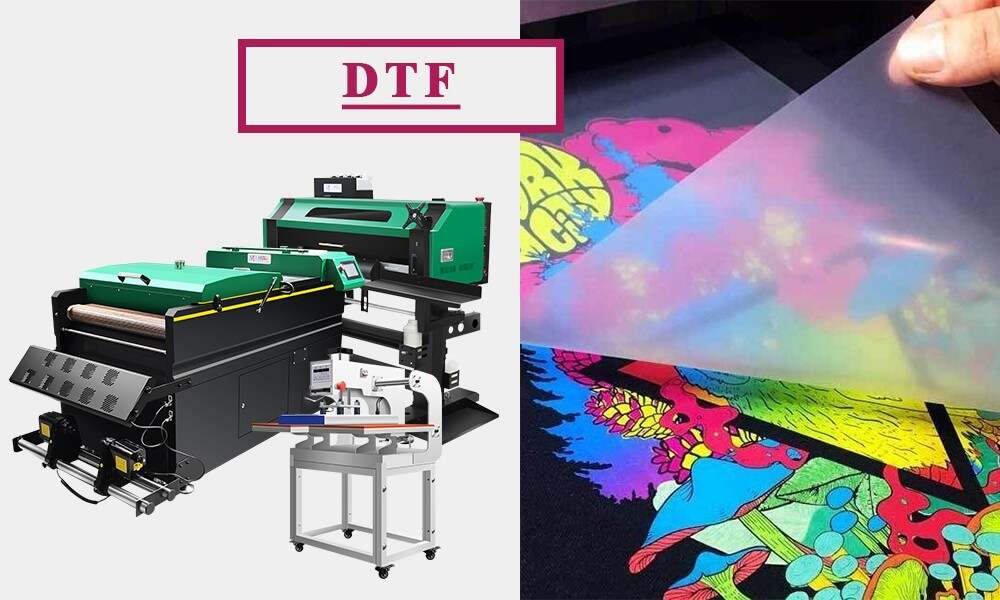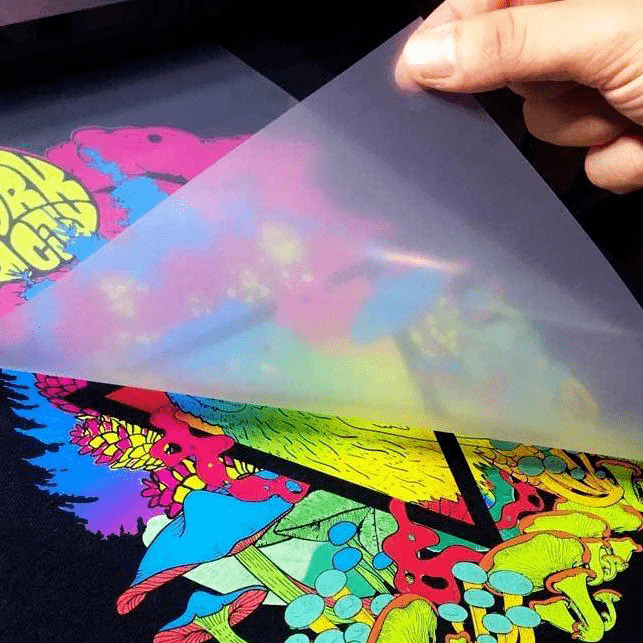The Future of Fashion: Checking Out DTF Printing Technology in the Fabric Industry
Among these improvements, Straight to Film (DTF) printing innovation has emerged as an encouraging contender, using one-of-a-kind capabilities and chances for developers and manufacturers alike. This innovative printing approach has actually stimulated passion due to its possible to reinvent typical fabric printing processes.
Evolution of Fabric Printing
Throughout history, the advancement of fabric printing has actually been a testament to the innovative innovations in this complex art form. From the ancient human beings making use of methods like block printing to the digital change of today, fabric printing has actually consistently pushed boundaries. The beginnings of fabric printing can be traced back to China around 220 AD, with making use of wood blocks to print on silk fabrics. As the craft infect various other parts of the globe, brand-new techniques such as screen printing and roller printing arised during the Industrial Revolution, changing the fabric industry - DTF Printing.
The intro of digital fabric printing in the late 20th century marked a substantial shift towards more functional and lasting printing methods. The advancement of textile printing showcases a rich background of imagination, ingenuity, and technical progress in the world of style and style.
Benefits of DTF Innovation
With the evolution of fabric printing methods from old methods like block printing to modern developments such as digital printing, the intro of Direct-to-Fabric (DTF) modern technology has substantially enhanced the effectiveness and sustainability of textile printing procedures. Among the main benefits of DTF innovation is its ability to directly print layouts onto fabric without the demand for transfer documents, which minimizes waste and simplifies the manufacturing process. In addition, DTF printing enables better color vibrancy and detail accuracy compared to standard approaches, allowing textile producers to produce intricate and high-quality styles easily.
Moreover, DTF innovation is understood for its versatility, as it can be used on various sorts of materials, consisting of all-natural fibers like woollen, cotton, and silk, as well as artificial materials such as polyester and nylon (DTF Printing). This versatility opens up a large range of opportunities for developers and makers to try out different appearances and products, resulting in more innovative and special products in the fashion business. Generally, the application of DTF innovation stands for a significant advancement in fabric printing, supplying countless advantages that add to the future sustainability and creativity of the industry
Sustainability in vogue Production
Highlighting green practices is critical in contemporary style manufacturing, aligning with the growing customer demand for sustainable products. Recently, the garment industry has dealt with raising scrutiny due to its significant ecological effect, including too much water use, chemical air pollution, and textile waste. As a reaction, numerous fashion brand names are currently incorporating sustainable practices into their production processes to lessen damage to the environment.
Sustainability in fashion production includes various elements, such as making use of recycled and organic materials, minimizing power intake, applying honest labor practices, and promoting openness throughout the supply chain. Furthermore, advancements in technology, like DTF printing, deal chances to additionally enhance sustainability in fabric production. This technology allows precise printing on materials, decreasing ink waste and water use compared to conventional printing approaches.
Layout Flexibility and Modification

Moreover, DTF printing assists in personalization on a scale previously unattainable, enabling individualized clothes and one-of-a-kind items tailored to individual preferences. Customers can currently actively join the style procedure, developing garments that reflect their design and character. Read Full Report This modification not only improves the consumer experience yet also promotes a sense of exclusivity and uniqueness in a market filled with mass-produced clothing. Overall, DTF printing technology revolutionizes the layout landscape in the textile industry, providing endless opportunities for web imaginative expression and personalized style.
Influence On Supply Chain & Market Trends
DTF printing technology in the fabric industry is reshaping supply chain dynamics and affecting market trends via its efficiency and customization capabilities. By enabling on-demand printing and eliminating the demand for large supplies, DTF modern technology simplifies the supply chain procedure. Makers can generate products as required, lowering waste and storage prices. This just-in-time manufacturing model also permits quicker feedback to market needs and fads, causing a much more active and responsive supply chain.
Moreover, the customization possibility of DTF printing technology is transforming the market patterns in the fabric industry. As a result, DTF innovation is driving a change in the direction of more customer-centric and ingenious strategies within the textile industry, shaping the future of fashion.

Verdict
In verdict, DTF printing technology is reinventing the textile sector by using various advantages such as layout sustainability, customization, and liberty. This cutting-edge technology is improving the future of fashion production, affecting supply chains, and driving market patterns towards extra effective and eco-friendly practices. As the industry remains to evolve, DTF printing will play an important function in forming the method fabrics are generated and eaten in the years ahead.
From the ancient people making use of methods like block printing to the digital transformation of today, textile printing has continually pushed borders. As the craft spread to various other components of the world, new approaches such as display printing and roller printing emerged during the Industrial Revolution, revolutionizing the textile sector.
The intro of digital textile printing in the late 20th century noted a considerable change towards more sustainable and versatile printing approaches.With the evolution of textile see here printing strategies from ancient methods like block printing to modern innovations such as electronic printing, the introduction of Direct-to-Fabric (DTF) technology has dramatically enhanced the performance and sustainability of fabric printing processes (DTF Printing).In feedback to the crucial shift in the direction of sustainability in fashion manufacturing, the adoption of innovative modern technologies like DTF printing not just addresses ecological concerns however also opens up opportunities for unequaled style freedom and customization in the textile industry
Comments on “Understanding DTF Printing: A Comprehensive Guide to Direct-to-Film Techniques”